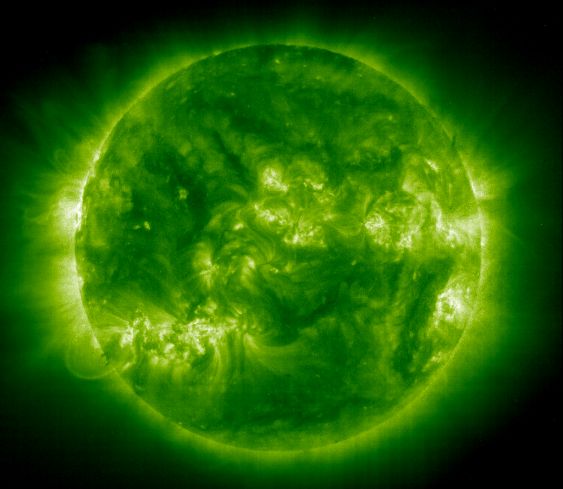Weird Science! Seven Strange Science Facts
Subhead
Amazing Facts About Science and our Sky
For daily wit & wisdom, sign up for the Almanac newsletter.
Let’s do something different, and mix sky-stuff with weird science! Ready? Here are seven strange science facts—about everything under the Sun from rainbows to our reflection in mirrors!
- Number 1. A rainbow has no independent reality. Sunlight and raindrops are not enough to create one. An observer is necessary for its existence, by standing exactly where the 42-degree refraction geometry gets completed. One bit of evidence that they’re not real is that rainbows not only cannot cast shadows, but also do not cast reflections! Learn more about rainbows and how they form.
- Speaking of which, number 2: You’ve always noticed that your reflection in a mirror is reversed left-to-right. But why isn’t it also reversed top-to-bottom? This has engendered heated logical arguments. Think about it.

- Number 3. Nearly the entire Sun, all two octillion tons of it, creates neither heat nor light. Instead the bright ball you can sometimes see through thin clouds is just the thin surface where its energy escapes. Its actual power of 4 trillion watts, equal to 96 billion H bombs per second, is generated in a tiny blindingly dazzling ball at its core, with just 1/200th of the Sun’s volume.
- Speaking of the Sun, number 4: What kind of energy do you think it emits most strongly? Heat? Ultraviolet light? Gamma rays? No. Its peak emission is ordinary green light. That’s why that color is the one our eyes most easily perceive.

- Number 5. If you dug a hole clear through the Earth, sucked out the deadly hot air and then jumped in, how long would it take to fall from California to New Zealand? Answer: 90 minutes. The same exact period early satellites took to orbit around Earth.

- Number 6. Ever wonder how long it takes the sun to move its own width as it crosses the sky? (Hint: It’s also the length of every sunset, most precisely those seen from the tropics.) Answer: Two minutes.
- Number 7: One breathful of air has the same relationship to all the air on Earth, as one atom of that air to all the air in your lungs.
I love this stuff. Let me know if you do too.
About The Author
Bob Berman
Bob Berman, astronomer editor for The Old Farmer’s Almanac, covers everything under the Sun (and Moon)! Bob is the world’s most widely read astronomer and has written ten popular books.
Read More from Bob Berman













